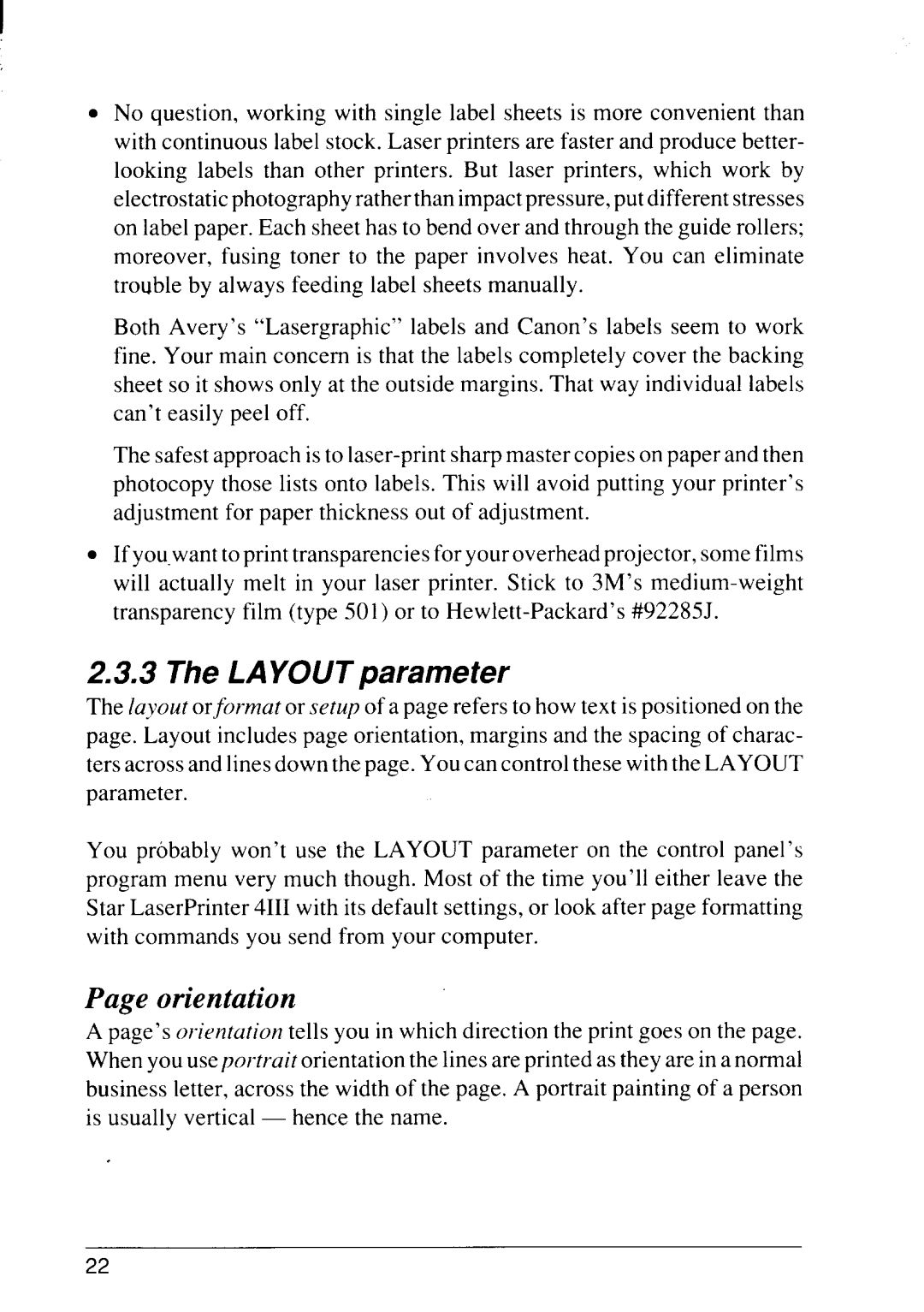
I
. No question, working with single label sheets is more convenient than with continuous label stock. Laser printers are faster and produce better- looking labels than other printers. But laser printers, which work by electrostaticphotographyrather than impactpressure,put different stresses on label paper. Each sheet has to bend over and through the guide rollers; moreover, fusing toner to the paper involves heat. You can eliminate trouble by always feeding label sheets manually.
Both Avery’s “Lasergraphic” labels and Canon’s labels seem to work fine. Your main concern is that the labels completely cover the backing sheet so it shows only at the outside margins. That way individual labels can’t easily peel off.
The safest approach is to
. If you.wantto print transparencies for your overhead projector, some films will actually melt in your laser printer. Stick to 3M’s
2.3.3 The LAYOUT parameter
The layout orformat or setup of a page refers to how text is positioned on the page. Layout includes page orientation, margins and the spacing of charac- ters across and lines down the page. You can control these with the LAYOUT parameter.
You probably won’t use the LAYOUT parameter on the control panel’s program menu very much though. Most of the time you’ll either leave the Star LaserPrinter 4111with its default settings, or look after page formatting with commands you send from your computer.
Page orientation
A page’s orientation tells you in which direction the print goes on the page. When you useportrait orientation the lines are printed as they are in a normal business letter, across the width of the page. A portrait painting of a person is usually vertical — hence the name.
22
